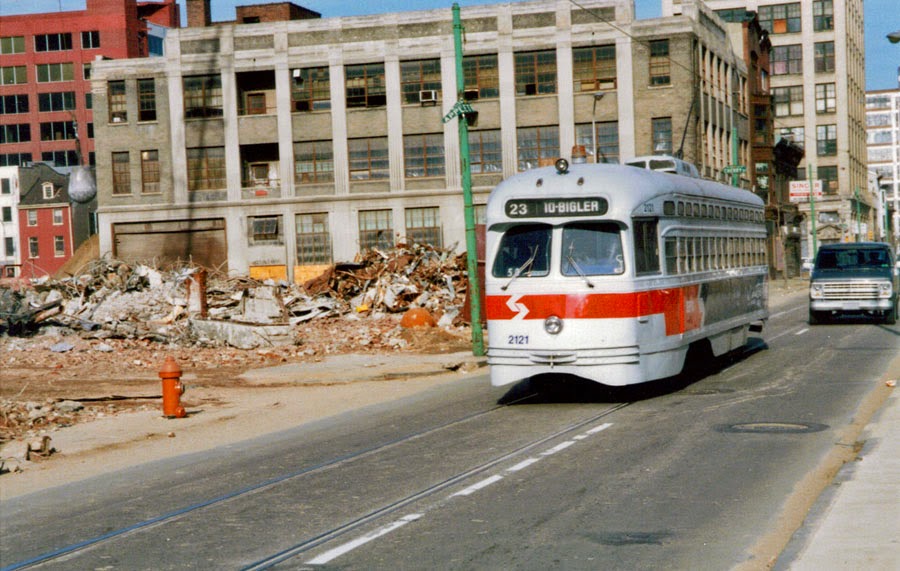 The Sound of Philadelphia is coming down to make way for Carl Dranoff's towering SLS International Hotel and Residences on South Broad Street. Philadelphia International Records was definitely a Philadelphia institutions, and an American one. But uptown in a forgotten pocket of Center City, perhaps the last pocket to be terraformed by new condos and hotels, Sigma Sound Studios is also no-more.
The Sound of Philadelphia is coming down to make way for Carl Dranoff's towering SLS International Hotel and Residences on South Broad Street. Philadelphia International Records was definitely a Philadelphia institutions, and an American one. But uptown in a forgotten pocket of Center City, perhaps the last pocket to be terraformed by new condos and hotels, Sigma Sound Studios is also no-more. BizJournals has the skinny.
The small building that gave us Macho Man and Disco Inferno, the latter a song that never seems to end, has been sold and will be converted into apartments. It isn't clear yet whether the building will simply be renovated, grow, or like the Sound of Philadelphia, demolished for something larger. Sigma Sound Studios isn't a huge building, and in an emerging neighborhood literally steps from City Hall, its redevelopment would likely profit from additional space.
This neighborhood - the place I've called home for almost eight years - is a unique one. It's long-gone warehouses once housed films from studios like Warner Brothers and MGM throughout the 30s, 40s, and 50s. But throughout much of the 20th Century, it was also a notorious red light district. Rumor has it, in the early 20th Century, sailors docked on Delaware Avenue were forbidden from walking the streets of what was often called the Furnished Room District, so named for its abundance of flop houses, brothels, and drug dens.
As late as the early 2000s, XXX book stores occupied Arch Street and loosely named "massage parlors" still play a part in what's left of a neighborhood clinging to its seedy past. Likely because of its history, the district bound by Broad, 11th, Market, and Vine was targeted for reconstruction in the 70s, 80s, and 90s. Unfortunately its history - the good, the weird, and the untoward - has been scraped from the historical narrative of Philadelphia with very little record.
While I'll miss my cheap rent and a garden a stone's throw from City Hall, it will be exciting to see how the neighborhood evolves and how its unique inhabitants choose to remember it. Wedged between the Convention Center and the growing Loft District, change was inevitable. Hopefully it won't soullessly embrace the convention center but also retain a little bit of its heart, however jaded. Things in Philadelphia tend to do just that.























